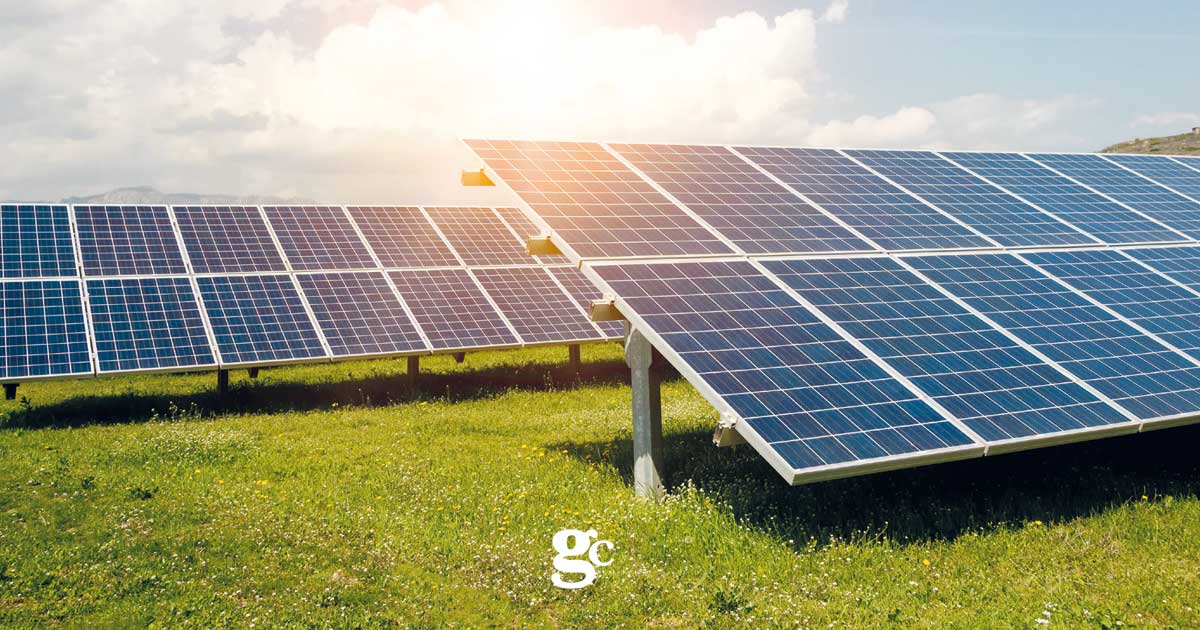28 December 2022

“In some ways, 1979 seems like a distant year. Although in popular imagination the concept of solar energy immediately leaps forward into the future, 1979 was the year when the first photovoltaic plant was installed in our country, precisely in the Apennines at Passo della Mandriola, with a capacity of 1 kW”.
Here begins the story of Alberto Ossola, CEO and Technical Director of Ossola Impianti S.r.l., an electrical systems company founded by his father in 1978.
Born into a working environment where photovoltaic systems were already prominent, Ossola places great confidence in renewable energies for Italy’s future: “Year after year, the market has reached new heights, thanks to nations becoming more aware of issues such as climate change and global warming reduction.
It also represents a significant opportunity for independence for our country: trusting in new technologies and innovation will undoubtedly bring benefits.” We are looking at an electrical production system that originated in 1839, with the French physicist Alexandre Edmund Becquerel. He discovered that certain metallic elements exposed to sunlight could generate an electric current. “It was exactly this discovery that gave rise to what is now a technology capable of changing the fate of the peninsula,” says Ossola.
The first solar panel was created in 1879 by scientist Charles Fritts. It consisted of a cell made of selenium and a thin layer of gold, with an energy conversion rate of 1-2%. “It was a particularly low result: consider that today a solar panel converts nearly 20% of energy. However, it was thanks to these early attempts that we now have the great opportunity of photovoltaics.”
From the 1960s onward, the renewable energy market officially began. Photovoltaics started to be commercialized, and the oil crisis only fueled the common belief in harnessing new energy sources. “In Italy, growth began in the 1990s, encouraged by technological advances, lower production costs of solar panels, and government incentives, known as Conto Energia.”
Since then, the trend towards alternative and renewable energies has consistently grown. The distribution of installations across the country is highly diversified: Southern regions benefit from better sunlight and are thus more productive, even though Northern Italy accounts for the majority of installations (about 55%).
“In terms of trends, there’s a slight prevalence of rooftop solar panels in the peninsula: 58% compared to 42% ground-based installations. The reasons for this choice can be based on technical or ethical principles. Technically, installing solar panels on rooftops involves faster approval procedures. On the other hand, ground-based installations ‘require’ rather large areas, creating a perceived conflict between electricity production and agricultural sectors. However, I support ground-based photovoltaic systems. By using just 1% of marginal, unused land that cannot be utilized otherwise, we can repurpose abandoned spaces to generate up to 20 GW of renewable electricity.”
Analyzing the present, Ossola shows no hesitation regarding the profitability of photovoltaic systems: “The current energy situation brings a significant reduction in the payback period for investments in these systems. The increase in electricity costs has already had its impact on bills in 2022: the best time to make this decision is now. It is far more cost-effective to produce your own electricity at home or in a business with the help of a photovoltaic system. This way, energy expenses are reduced, and there is no need to endure the impact of rising raw material costs. For example, the economic benefit for a family living in a villa can reach up to 75% annually, while environmentally, the same family would contribute to reducing CO2 emissions by 1.7 tonnes per year. Moreover, government incentives today support those choosing renewable energy: in 2022, it is unquestionably a more accessible solution compared to fossil fuels.”
Ossola is certainly not alone in sharing this view: just a year and a half ago, world-renowned economist Jeremy Rifkin, in an interview broadcasted by Rai, asserted that over the past 25 years, the development of renewable and wind energies has seen significant growth accompanied by a corresponding decrease in costs. In the 1970s, 1 kW of solar energy cost $78; today, it costs 35 or 40 cents. We were already talking about the Third Industrial Revolution, in which solar and wind are decidedly more cost-effective than fossil fuels. Notably, countries like Costa Rica have already decided to phase out fossil fuels from their economies, replacing them with clean and renewable energies.
“The measures taken by a small Central American country demonstrate how it is entirely possible to replace fossil fuels with renewables. Europe has all the technologies and resources available to undergo such a transition and remain consistent with the goals of the Green Deal. Additionally, as emphasized five months ago by Andrea Meza, the Minister of Energy and Environment of Costa Rica, natural gas used for energy production is tied to the conflict between Russia and Ukraine. By continuing to purchase natural gas from Russia, Europe continues to finance a military conflict instead of investing that same money within its borders to incentivize renewable energy production, which would make Italy an independent country.”
Spain also seems to have recognized the potential of investing in solar panels: an entire region, Extremadura, hosts Europe’s largest photovoltaic plant. The entire area has been converted to renewable energy production, currently generating around 4000 MW. This process began, as described last year by the region’s president Guillermo Fernandez Vara, after realizing that times were changing and legislative adjustments were necessary to streamline authorization procedures.
Today, Extremadura adds an additional 1000 MW of production each year. “This change represents part of the solution to the conflict sparked in Ukraine,” says Ossola. “Renewable energy has the tremendous advantage of not depending on anyone. Every country has wind and every country has sun; what’s lacking is only the decision. The technology of a photovoltaic panel is extremely simple: even in Italy, bidding farewell to fossil fuels is entirely feasible. The CEO of Enel himself asserts that within three years, Italy can be independent from Russian gas and meet 75% of its current energy needs solely through renewables.”
Solar energy is the fastest-growing energy industry in the world: today, ground-mounted installations produce five times more than twelve years ago, with prices ten times lower. So far, Chinese companies have dominated the technological production of panels, but Alberto Ossola has no doubts about the future of the peninsula in this regard: “Italian innovation and research are making headway, creating very important industrial opportunities. Consider Convert, based in the province of Rome, which designs and installs numerous systems from South Africa to America equipped with Tracker technology. The strength of this innovation lies in the mobility of individual panels: they move from east to west, literally hunting the sun, in a slow and simple manner, yet ensuring 20% more production capacity.
Innovation does not stop there: consider also the Enel factory in Catania, currently undergoing restructuring. When it reopens in 2023, it will effectively be the largest gigafactory on the continent, producing over 15,000 solar panels daily. The innovation lies in the launch of the so-called ‘bifacial’ model, capable of capturing solar reflection on the ground as well. This model will also guarantee increased production by up to 30% compared to traditional panels.” Eliano Russo, the responsible director of Enel Green Power, in a recent statement reported by Ansa, is confident that the comparison with China will not intimidate our country: the product will be manufactured within a sustainable, traceable process that respects labor conditions and rights. In this regard, to fuel Alberto Ossola’s confidence in Italy’s future in terms of ground-mounted installation and production, there is also a start-up from the Catania Innovation Center challenging Chinese manufacturers, launching a system that addresses one of the main issues of solar panels, that of dust and accumulated dirt. The start-up’s solution is a technology that, in terms of solar panel cleaning, is unprecedented today: it utilizes a robot that autonomously moves among the panels and cleans them dry. Estimates made during testing foresee benefits that will increase the efficiency of the photovoltaic system by 33-35%.
Ossola Impianti itself aims, for forty years now, to keep pace with technological innovation: “What we want to offer the customer is the assurance of the best product on the market, with the best assistance and support behind it. Trusting in new inventions is not a leap into the void; it is placing extreme confidence in Italian minds and in the Made in Italy product. We bring the best of our era into Italian homes and businesses, so that the final result, that of energy efficiency and savings, is maximized as the market offers. Since the early 2000s, the company has ridden the wave of photovoltaic success, and since then, the installation of systems has become the central point of our work, and we can boast the satisfaction of private individuals, public administration, and small and medium-sized enterprises that have chosen to rely on us.
We strongly believe that ensuring the customer benefits from choosing renewable energies is the first step toward a larger change that will convince the entire country to take a leap forward. We have all the necessary tools to change Italy’s future: industries are ready for production, and research continues to make giant strides,” concludes Ossola, “what is lacking is only the political decision to focus on the renewable market. As also stated by Confindustria, representing 500 companies operating in the clean energy sector, 85 GW to be achieved by 2030 will suffice. With this goal, 85% of Italy’s energy needs will come from renewable energy plants, creating over 470,000 jobs. To achieve this milestone, however, installations of systems need to be at least ten times faster than the average numbers we are counting on today.”
www.ossolaimpianti.com
Taken from Green Company Magazine (Volume 8) – see all magazine issues

Press review
For information




